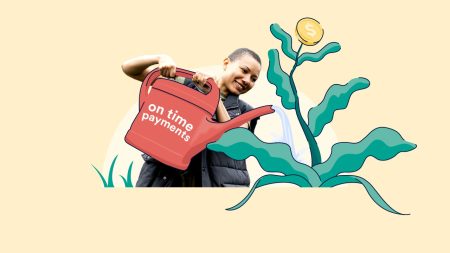Key takeaways
- An automatic stay prevents creditors from taking action to collect on certain debts when you file for bankruptcy.
- Automatic stays can offer some protection against eviction, foreclosure, repossession and wage garnishment, but they do not apply to child support, alimony or certain tax debts.
- Automatic stays can last anywhere from 30 days to five years, depending on the type of bankruptcy filed, the type of debt and your financial record.
One of the most important protections offered by filing for bankruptcy is the automatic stay, which serves as a shield against many debt collection efforts. An automatic stay provides temporary relief by delaying or even preventing foreclosure, repossession and lawsuits.
But an automatic stay can’t protect you from everything — certain types of debt, such as child support, alimony and criminal fines, are not covered by the stay, and creditors may request that the court lift the stay in some cases.
Knowing how automatic stays work and what protections they provide can help you decide if this benefit makes bankruptcy the right option for you.
What is an automatic stay?
An automatic stay is an injunction that prevents some creditors from continuing to pursue debt collection when you file for bankruptcy. “The automatic stay is a core feature of U.S. bankruptcy law that immediately halts most creditor actions when a bankruptcy petition is filed. It is an injunction created by Section 362 of the Bankruptcy Code that stops lawsuits, foreclosures, repossessions, and debt collection efforts without a separate court order,” says Chad D. Cummings, CEO at Cummings & Cummings Law.
A freeze on creditor activity can help those filing for bankruptcy have time to figure out next steps. If you’re past due on your mortgage or auto loan, for example, and you file for bankruptcy, lenders can’t foreclose on your home or repossess your car while the automatic stay is in place.
How does an automatic stay work?
The two most common types of bankruptcy, Chapter 7 and Chapter 13, both offer automatic stays, which take effect when the bankruptcy petition is filed. The petition itself triggers the automatic stay as a built-in feature of the bankruptcy process. So you do not need to file additional paperwork to invoke the stay.
Creditors cannot take certain actions during the automatic stay, including:
- Contacting you to demand payment.
- Starting or continuing court proceedings to collect debt.
- Foreclosing on a property.
- Repossessing any belongings used as collateral for a loan.
- Placing a lien against your property.
What types of debt are included in an automatic stay?
An automatic stay covers several types of debt and legal proceedings, including the following.
Evictions (in some cases)
Automatic stays stop evictions. However, if the landlord receives an eviction judgment from the court before you file bankruptcy, they can proceed with the eviction regardless of the automatic stay. Landlords also have the option to request that the stay be lifted early in most states. This would remove the eviction protection and allow the eviction to proceed.
Some landlords may be willing to negotiate. For example, if you can pay the back rent within 30 days, your landlord may withdraw the eviction and allow you to remain in the unit.
Foreclosures
An automatic stay immediately stops foreclosure proceedings, allowing you to remain in the home longer. However, the lender could file a motion to lift or modify the stay. If the court approves the lender’s motion, foreclosure proceedings could resume.
Government benefits
In some cases, government agencies overpay benefits, like Medicare, SNAP or unemployment benefits and attempt to collect the amount of the overpayment. An automatic stay stops this collection.
Repossession
An automatic stay immediately stops any repossession efforts. However, as with foreclosure, lenders can file a motion to lift or modify the stay. Court approval of the lift or modification would allow the lender to resume their collection or repossession efforts.
Utilities
An automatic stay temporarily prevents your utilities from getting shut off, typically for around 30 days. If you are not making payments at the end of the stay period, the utility companies can request that the stay be lifted. This would allow them to continue collection efforts, including shutting off service.
Most wage garnishment
If you’ve filed for bankruptcy, an automatic stay will stop most wage garnishment, except garnishment related to child support, alimony and certain tax debts. Depending on the type of debt, it could be discharged in bankruptcy, allowing you to avoid future wage garnishment when the bankruptcy is over.
What types of debt are excluded from an automatic stay?
While an automatic stay pauses the collection of many common debts, it doesn’t cover everything. “There are certain actions that are not stayed by the automatic stay. These include enforcement of paternity or domestic support obligations, child custody, an order by a taxing agency to determine tax liability and certain police enforcement powers, among others,” says Brian Davidoff, Chair of the Bankruptcy, Reorganization & Capital Recovery practice at Greenberg Glusker in Los Angeles.
The following debts are typically excluded from an automatic stay:
- Any debts related to family court rulings. Child support and alimony (spousal support) must still be paid as scheduled. If court-ordered support payments are past due, collection efforts can continue on those balances, despite an automatic stay.
- Any money owed as a result of criminal action. Fines or restitution payments ordered by the court following a criminal proceeding remain collectible throughout an automatic stay.
- Any tax refunds. While the IRS cannot contact you to collect past-due taxes or place a tax lien against your property during an automatic stay, tax law allows the agency to conduct tax audits, demand tax returns and seize any tax refund that may be due to you during this period.
In some cases, after filing for bankruptcy, banks enforce an administrative freeze. This means the bank prevents you from withdrawing funds from your account. The intent is to protect the money so it can be used to repay creditors as determined by the bankruptcy trustee.
Do automatic stays protect co-borrowers and guarantors?
Automatic stays only protect the party that filed for bankruptcy. Any co-borrowers or guarantors are still liable for the debts, and creditors can pursue those parties even while an automatic stay is in place for the individual who filed for bankruptcy.
How long does an automatic stay remain in effect?
The length of the automatic stay depends on the type of bankruptcy and debts. It is also important to remember that individual creditors can request that the stay be lifted for the debt owed to them. The court rules on these requests on a case-by-case basis.
Automatic stay for Chapter 7 bankruptcy
For Chapter 7 bankruptcy, the automatic stay generally remains in effect until the bankruptcy case is discharged or closed. This typically takes around three to six months after filing.
Automatic stay for Chapter 13 bankruptcy
For Chapter 13 bankruptcy, the automatic stay remains in effect while the Chapter 13 repayment plan is active. This usually takes three to five years. As long as you continue to make payments per your plan, the stay remains in place.
Automatic stay for repeat bankruptcy
If you’ve had another bankruptcy case dismissed in the past year, the automatic stay may only last 30 days.
“Repeat bankruptcy filings face special limits: a second case within a year triggers a stay of only 30 days, and a third case gets no automatic stay at all unless the court orders otherwise.” Cummings says. “In addition, secured creditors can ask the court to lift the stay if their collateral is not adequately protected. The automatic stay is a powerful but temporary shield: it provides breathing room, but it does not resolve debts by itself.”
Can debtors be denied an automatic stay?
People can be denied an automatic stay in rare cases. This typically only happens when it appears the person is not acting in good faith.
For example, if a person has multiple bankruptcy filings within a short timeframe or has had a previous bankruptcy case dismissed due to fraud or abuse of the system, the bankruptcy court may deny the automatic stay.
What happens after an automatic stay is lifted?
While an automatic stay prevents most debt collectors from pursuing collections or lawsuits against you, lifting a stay allows them to resume these activities.
Ideally, the stay will remain in place for all eligible debts while you work through the bankruptcy. Then, when the proceedings are complete and the stay is lifted, all those debts will have been paid off or discharged through the bankruptcy process, and there will be no remaining debts for them to pursue.
What happens if an automatic stay is violated?
While the automatic stay goes into effect when the bankruptcy petition is filed, it may take a little time to notify all your creditors. So there could be inquiries from debt collectors unaware of the automatic stay. In this case, you can provide the information about your bankruptcy, such as the case number, filing date and court, to verify your bankruptcy filing.
If any creditor continues to violate the stay after being made aware of your bankruptcy filing, you may be able to take legal action. Violating the stay has ramifications for the creditor. For instance, if the creditor willfully violated the stay and caused you financial injury, they must pay for any damages you experienced, including attorney fees and any other related expenses. A creditor may also be required to pay you punitive damages.
Bottom line
“A debtor considering bankruptcy should consult an experienced attorney to pick the right time to file (ideally before a foreclosure sale or wage garnishment) and to plan for any obligations the stay will not pause (such as child support or certain taxes) … above all, seeking timely legal advice is the safest next step to manage the automatic stay’s effects,” Cummings says.
While an automatic stay can provide some welcome protection against creditors, filing for bankruptcy should still be a last resort. Bankruptcy has a long-term impact on your credit score, which can make it difficult to get a loan or rent an apartment for the next seven to 10 years. Before pursuing bankruptcy, consider alternatives like debt consolidation and debt settlement.
Why we ask for feedback
Your feedback helps us improve our content and services. It takes less than a minute to
complete.
Your responses are anonymous and will only be used for improving our website.
Help us improve our content
Read the full article here











